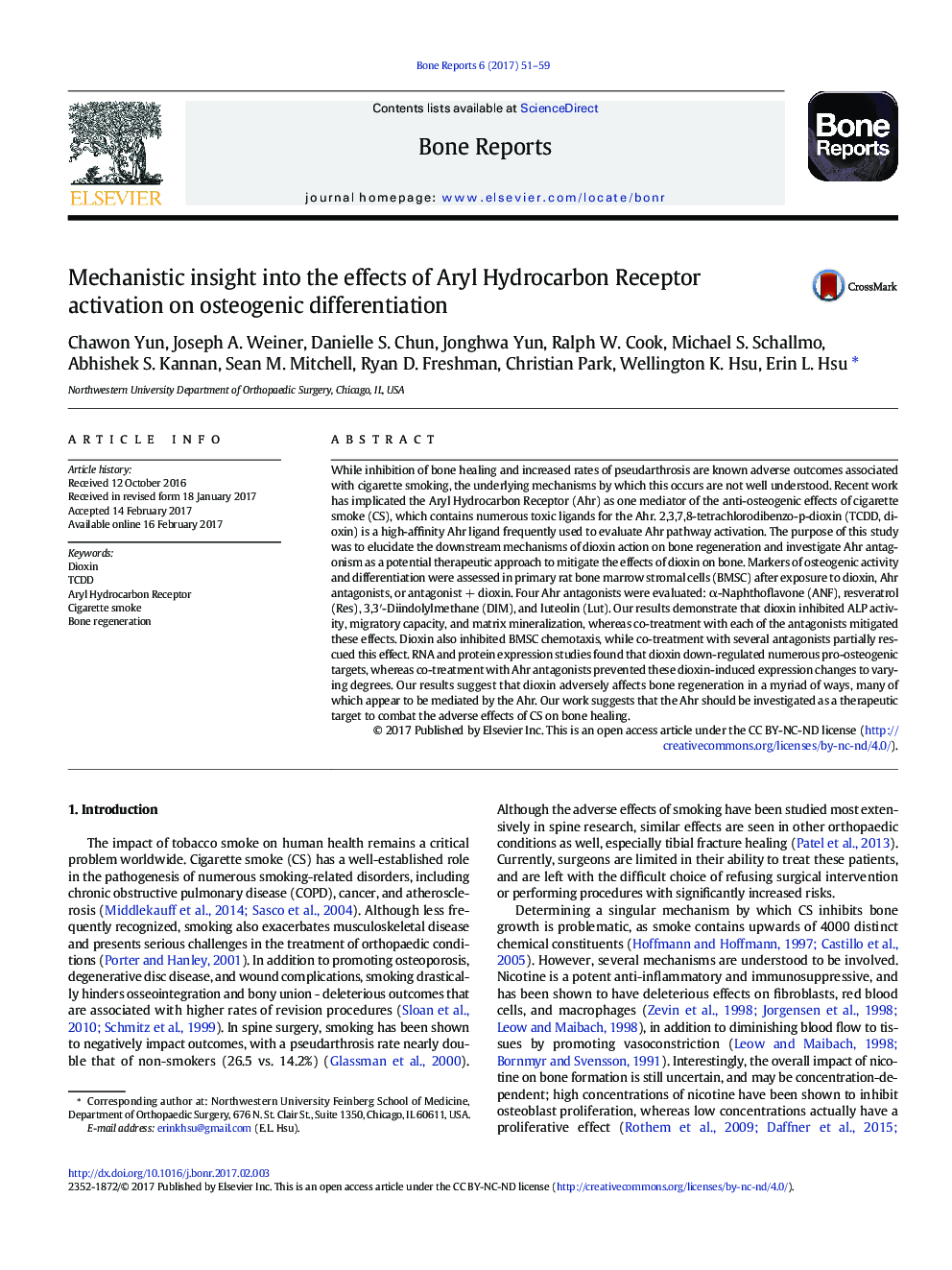| کد مقاله | کد نشریه | سال انتشار | مقاله انگلیسی | نسخه تمام متن |
|---|---|---|---|---|
| 5586727 | 1568666 | 2017 | 9 صفحه PDF | دانلود رایگان |
عنوان انگلیسی مقاله ISI
Mechanistic insight into the effects of Aryl Hydrocarbon Receptor activation on osteogenic differentiation
ترجمه فارسی عنوان
بینش مکانیکی به اثرات فعال شدن گیرنده آریل های هیدروکربن بر تمایز استئوژنیک
دانلود مقاله + سفارش ترجمه
دانلود مقاله ISI انگلیسی
رایگان برای ایرانیان
کلمات کلیدی
موضوعات مرتبط
علوم زیستی و بیوفناوری
بیوشیمی، ژنتیک و زیست شناسی مولکولی
علوم غدد
چکیده انگلیسی
While inhibition of bone healing and increased rates of pseudarthrosis are known adverse outcomes associated with cigarette smoking, the underlying mechanisms by which this occurs are not well understood. Recent work has implicated the Aryl Hydrocarbon Receptor (Ahr) as one mediator of the anti-osteogenic effects of cigarette smoke (CS), which contains numerous toxic ligands for the Ahr. 2,3,7,8-tetrachlorodibenzo-p-dioxin (TCDD, dioxin) is a high-affinity Ahr ligand frequently used to evaluate Ahr pathway activation. The purpose of this study was to elucidate the downstream mechanisms of dioxin action on bone regeneration and investigate Ahr antagonism as a potential therapeutic approach to mitigate the effects of dioxin on bone. Markers of osteogenic activity and differentiation were assessed in primary rat bone marrow stromal cells (BMSC) after exposure to dioxin, Ahr antagonists, or antagonist + dioxin. Four Ahr antagonists were evaluated: α-Naphthoflavone (ANF), resveratrol (Res), 3,3â²-Diindolylmethane (DIM), and luteolin (Lut). Our results demonstrate that dioxin inhibited ALP activity, migratory capacity, and matrix mineralization, whereas co-treatment with each of the antagonists mitigated these effects. Dioxin also inhibited BMSC chemotaxis, while co-treatment with several antagonists partially rescued this effect. RNA and protein expression studies found that dioxin down-regulated numerous pro-osteogenic targets, whereas co-treatment with Ahr antagonists prevented these dioxin-induced expression changes to varying degrees. Our results suggest that dioxin adversely affects bone regeneration in a myriad of ways, many of which appear to be mediated by the Ahr. Our work suggests that the Ahr should be investigated as a therapeutic target to combat the adverse effects of CS on bone healing.
ناشر
Database: Elsevier - ScienceDirect (ساینس دایرکت)
Journal: Bone Reports - Volume 6, June 2017, Pages 51-59
Journal: Bone Reports - Volume 6, June 2017, Pages 51-59
نویسندگان
Chawon Yun, Joseph A. Weiner, Danielle S. Chun, Jonghwa Yun, Ralph W. Cook, Michael S. Schallmo, Abhishek S. Kannan, Sean M. Mitchell, Ryan D. Freshman, Christian Park, Wellington K. Hsu, Erin L. Hsu,
